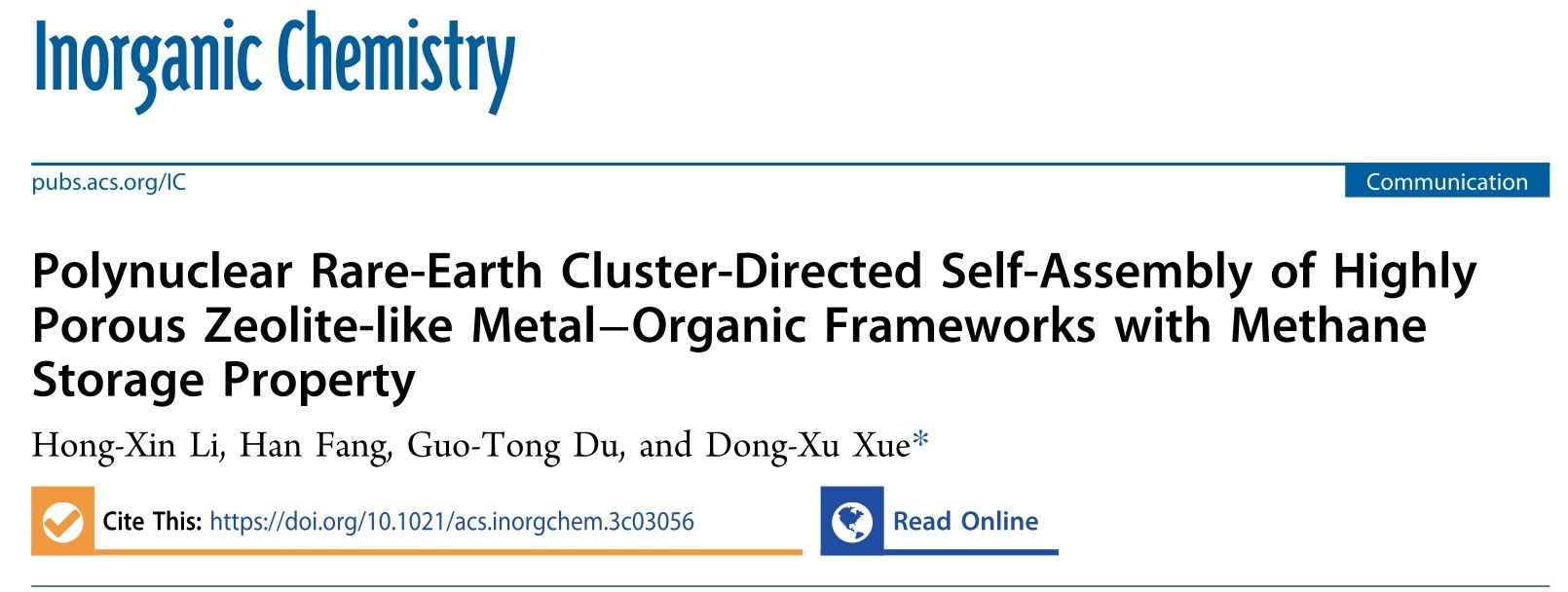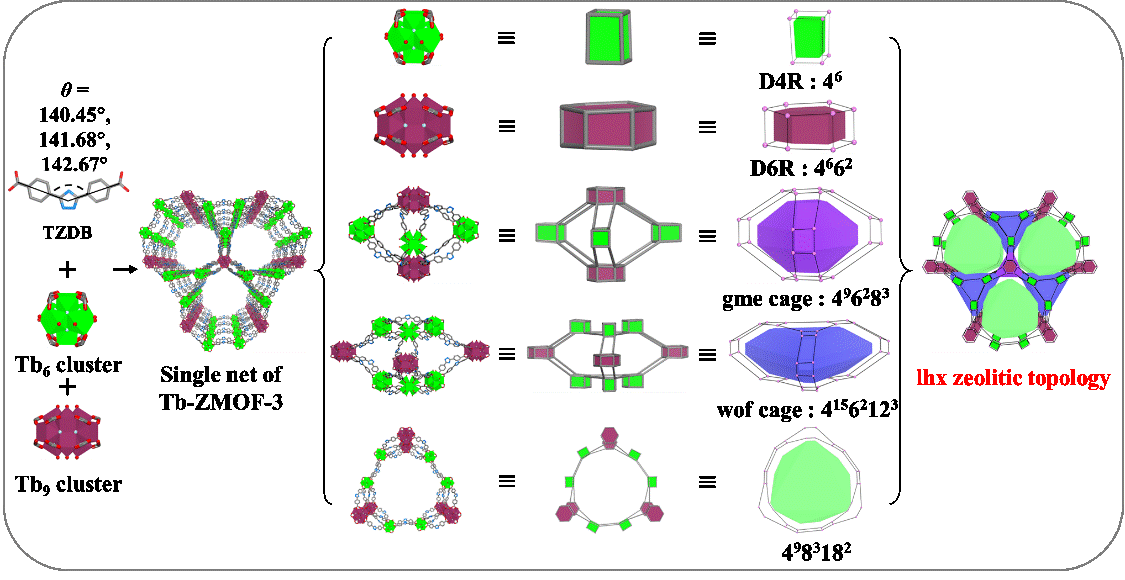
Hong-Xin Li, Han Fang, Guo-Tong Du, and Dong-Xu Xue*. Inorg. Chem., 2023, 62, 18014-18019.

Metal-organic frameworks (MOFs) as emerging crystalline porous materials have witnessed great achievements in the last more than two decades due to their intrinsic structural features and diverse potential applications including gas storage, separation and catalysis et al. Nevertheless, the performances of MOF materials are far below expected ones, e.g., high methane storage working capacity; simultaneously high selectivity and high uptake for selective target. Design and synthesis of new MOF materials is, therefore, still long-term goals for synthetic chemists.

Figure 1. Schematic representation of the assembly and structure of Tb-ZMOF-2.

Figure 2. Schematic representation of the assembly and structure of Tb-ZMOF-3.
Zeolite-like metal-organic frameworks (ZMOFs), a subset of metal-organic frameworks, have attracted great scientific attention given their unique pore system, distinctive cage-like cavities and various applications. Generally, there are three avenues to access the deliberate construction of ZMOFs. Firstly, the combinations of single-metal ions with functionalized imidazole or imidazole-derivatives, which demonstrates plentiful known/unknown zeolitic topologies along with limited porosities for gas storage under high-pressure and structural flexibility detrimental to gas separation. Secondary, the utilization of corner sharing super-tetrahedra building blocks constructed from trinuclear metal clusters with di-/tri-carboxylates, which exhibits merely mtn topology. Thirdly, the combinations of tetrahedral inorganic clusters/organic linkers with linear linkers/tetrahedral metal ions or clusters, which results in a few types of ZMOFs suffering from stability and porosity issues.
Due to their intrinsic structural features, the design and synthesis of a new type of ZMOFs is highly desirable but challenging. Herein, solvothermal reactions between an angular dicarboxylate linker and rare-earth (RE) ions afforded two RE-MOFs, namely, Tb-ZMOF-2 and Tb-ZMOF-3, respectively. Structural analyses reveal that b-ZMOF-2 encompasses a novel [446482] cage, while Tb-ZMOF-3 contains nonanuclear (i.e., D6R) and hexanuclear (i.e., D4R) RE clusters simultaneously, subsequently resulting in two new zeolitic topologies. Thanks to its high surface area and pore volume, Tb-ZMOF-2 demonstrates considerably high gravimetric and volumetric methane storage working capacities.
First Author: Doctoral candidiate Li Hongxin, Shaanxi Normal University
Corresponding Author: Prof. Xue Dongxu, Shaanxi Normal University
Full Text Link: https://pubs.acs.org/doi/10.1021/acs.inorgchem.3c03056